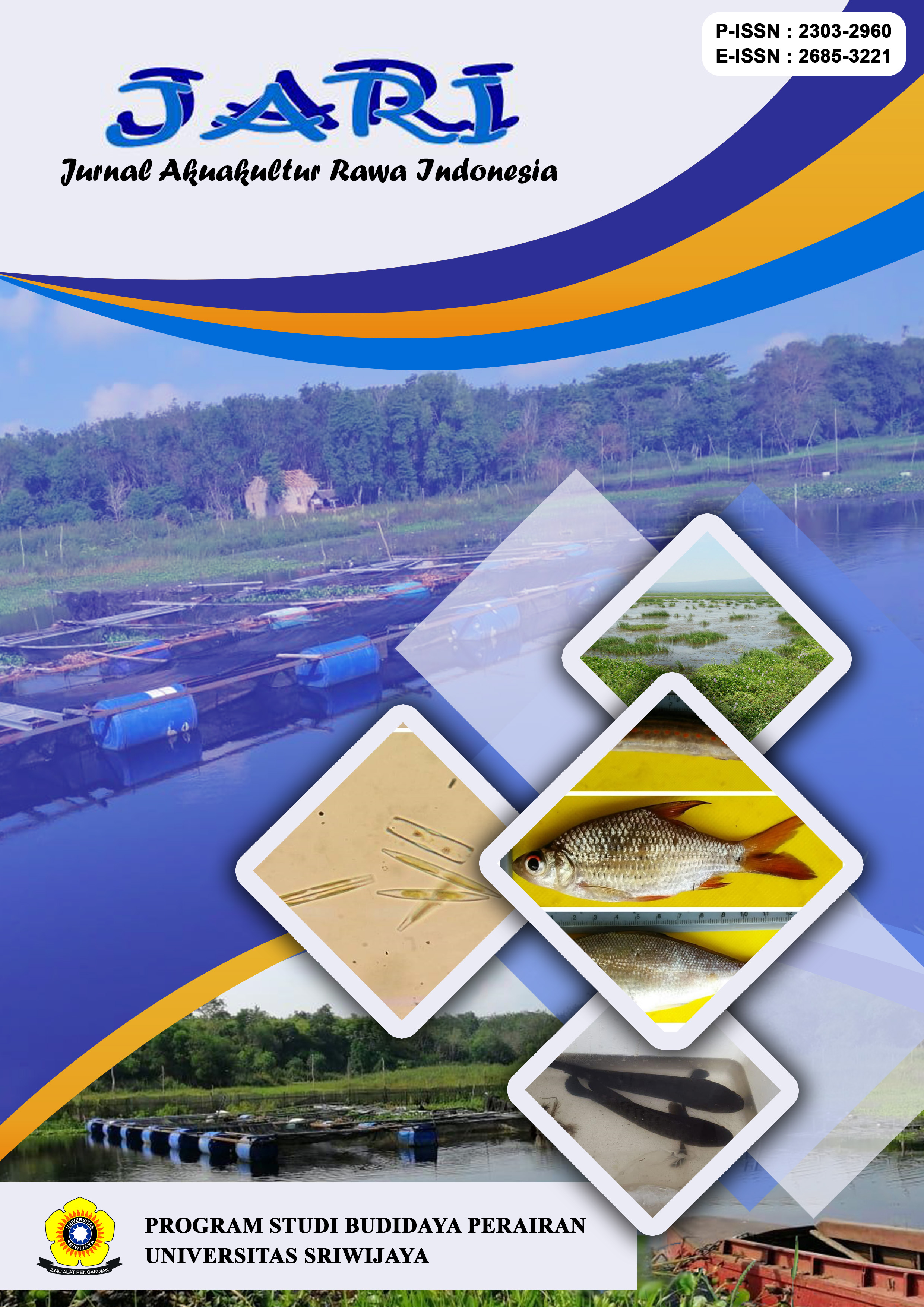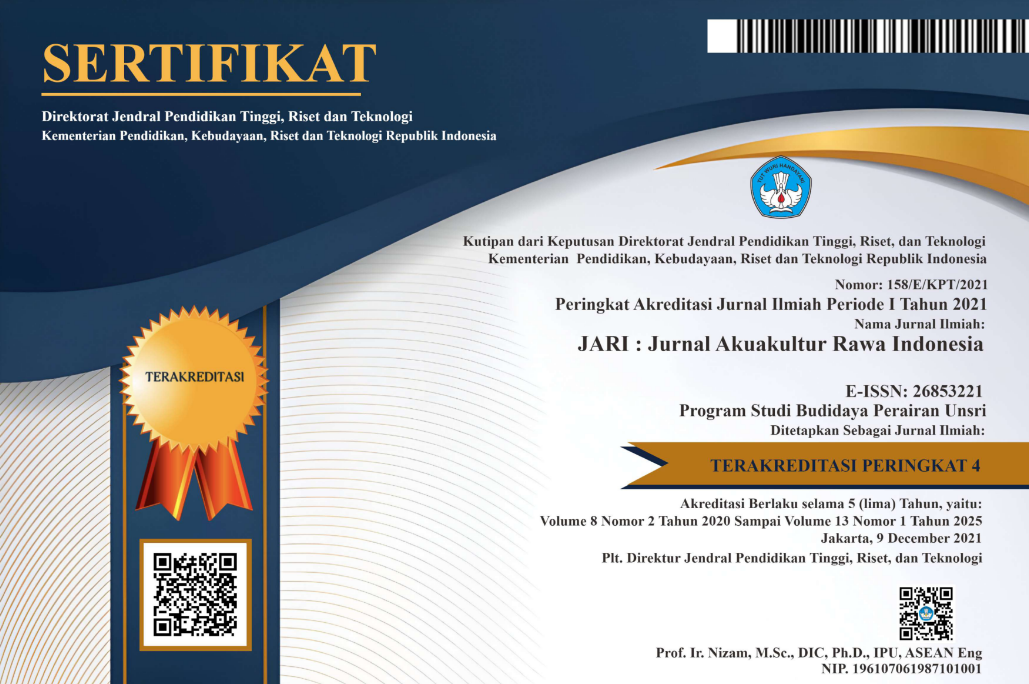OPTIMALISASI PADAT TEBAR IKAN BETOK (Anabas testudineus) DALAM AIR LIMBAH BUDIDAYA LELE (Clarias sp.): STUDI TENTANG EFISIENSI PERTUMBUHAN DAN PENGELOLAAN LIMBAH
DOI:
https://doi.org/10.36706/jari.v12i2.28Keywords:
climbing perch, cultivated wastewater, stocking densityAbstract
Aquaculture activities generate significant amounts of wastewater, primarily fish waste, metabolic by-products, and uneaten feed. One potential solution to mitigate this issue is the reuse of aquaculture wastewater to cultivate other fish species, such as climbing perch (Anabas testudineus). This study aimed to determine the optimal stocking density for climbing perch cultivation in catfish (Clarias sp.) aquaculture wastewater. The experiment was conducted by using a Completely Randomized Design (CRD) with three treatments and three replications: 2 fish per 2.5 L of wastewater (P1), 3 fish per 2.5 L of wastewater (P2), and 4 fish per 2.5 L of wastewater (P3). The results indicated that a stocking density of 2 fish per 2.5 L of wastewater (P1) was the most favorable treatment. Throughout the maintenance period, water quality parameters were as follows: average temperature 27.89 ± 0.060C, pH 6.90 ± 0.19, dissolved oxygen 5.15 ± 0.25 mg/L, ammonia 0.034 ± 0.020 mg/L, nitrate 22.33 ± 12.33 mg/L, total phytoplankton abundance 99.55 ind/L, and total zooplankton abundance 30.66 ind/L. Climbing perch demonstrated a 100% survival rate, with absolute length growth of 1.00 ± 0.07 cm and absolute weight growth of 0.93 ± 0.06 g. Feed conversion efficiency was high, at 72.48 ± 7.03%. Thus, using catfish aquaculture wastewater and appropriate stocking density offers a viable alternative for sustainable aquaculture waste management and fish production.















